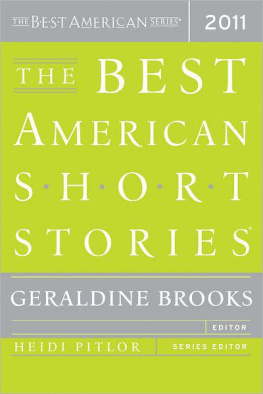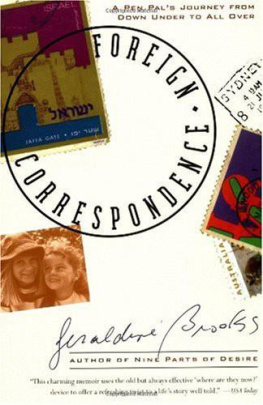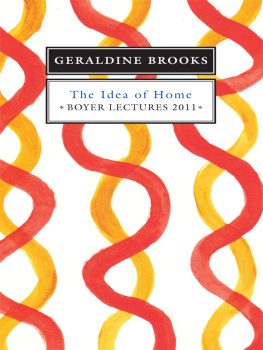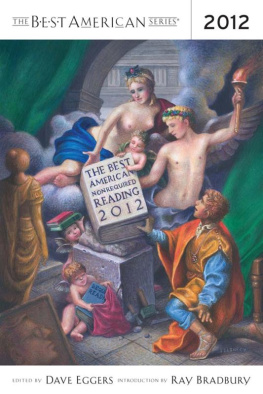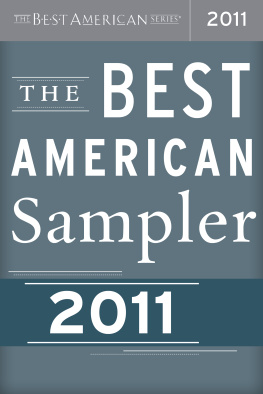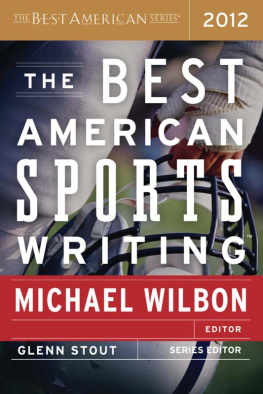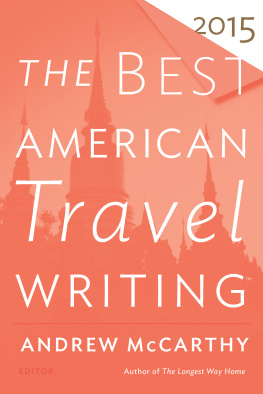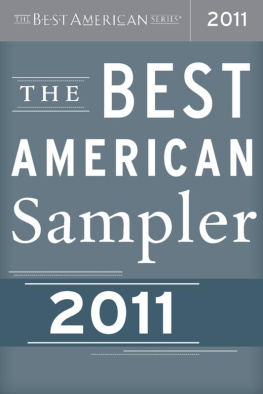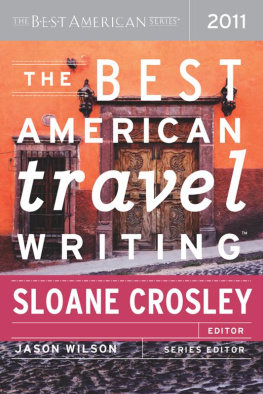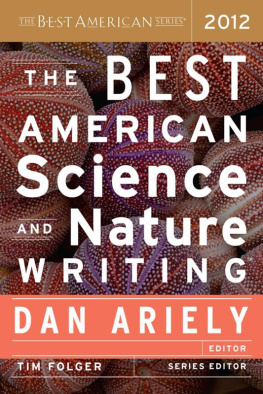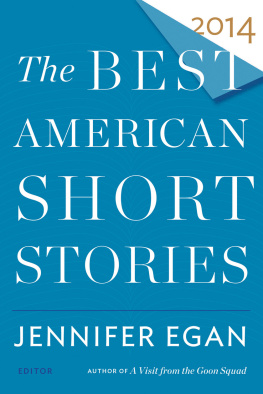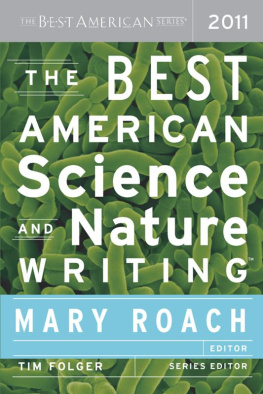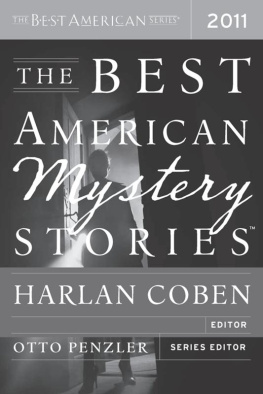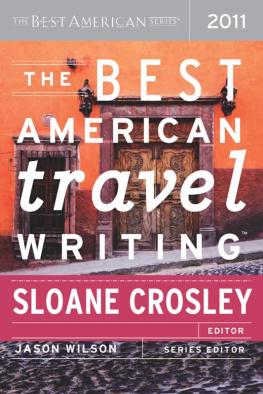Copyright 2011 by Houghton Mifflin Harcourt Publishing Company
Introduction copyright 2011 by Geraldine Brooks
ALL RIGHTS RESERVED
The Best American Series and The Best American Short Stories are registered trade
marks of Houghton Mifflin Harcourt Publishing Company.
No part of this work may be reproduced or transmitted in any form or by any means,
electronic or mechanical, including photocopying and recording, or by any infor
mation storage or retrieval system without the proper written permission of the
copyright owner unless such copying is expressly permitted by federal copyright
law. With the exception of nonprofit transcription in Braille, Houghton Mifflin
Harcourt is not authorized to grant permission for further uses of copyrighted se
lections reprinted in this book without the permission of their owners. Permission
must be obtained from the individual copyright owners as identified herein. Ad
dress requests for permission to make copies of Houghton Mifflin Harcourt mate
rial to Permissions, Houghton Mifflin Harcourt Publishing Company, 215 Park Av
enue South, New York 10003.
ISSN 0067-6233
ISBN 978-0-547-24208-8
ISBN 978-0-547-24216-3 (pbk.)
Printed in the United States of America
DOC 10 9 8 7 6 5 4 3 2 1
"Ceiling" by Chimamanda Ngozi Adichie. First published in Granta, no. 111.
Copyright 2010 by Chimamanda Ngozi Adichie. Reprinted by permission of The
Wylie Agency, LLC.
"Housewifely Arts" by Megan Mayhew Bergman. First published in One Story, no.
142, November 2010. To be published in Birds of a Lesser Paradise, March 2012,
Scribner. Copyright 2011 by Megan Mayhew Bergman. Reprinted by permission
of the author.
"A Bridge Under Water" by Tom Bissell. First published in Agni, no. 71. Copy
right 2010 by Tom Bissell. Reprinted by permission of the author.
"Out of Body" by Jennifer Egan. First published in Tin House, vol. 11, no. 3. From
A Visit from the Goon Squad by Jennifer Egan, copyright 2010 by Jennifer Egan.
Used by permission of Alfred A. Knopf, a division of Random House, Inc.
"Free Fruit for Young Widows" by Nathan Englander. First published in The New
Yorker, May 17, 2010. Copyright 2010 by Nathan Englander. Reprinted by permis
sion of Nathan Englander.
"La Vita Nuova" by Allegra Goodman. First published in The New Yorker, May 3,
2010. Copyright 2010 by Allegra Goodman. Reprinted by permission of The
Irene Skolnick Agency.
"Gurov in Manhattan" by Ehud Havazelet. First published in TriQuarterly, no.
137, January-December 2009. Copyright 2010 by Ehud Havazelet. Reprinted by
permission of the author.
"The Sleep" by Caitlin Horrocks. First published in The Atlantic Fiction for Kindle,
July 1, 2010. Copyright 2010 by Caitlin Horrocks. Reprinted by permission of
Sterling Lord Literistic, Inc. on behalf of Caitlin Horrocks.
"Soldier of Fortune" by Bret Anthony Johnston. First published in Glimmer Train,
no. 77, Winter 2011. Copyright 2010 by Bret Anthony Johnston. Reprinted by
permission of the author.
"Foster" by Claire Keegan. First published in The New Yorker, February 15 and 22,
2010. Copyright 2010 by Claire Keegan. Reprinted by permission of the author.
"The Dungeon Master" by Sam Lipsyte. First published in The New Yorker, Octo
ber 4, 2010. Copyright 2010 by Sam Lipsyte. Reprinted by permission of Sterling
Lord Literistic, Inc. on behalf of Sam Lipsyte.
"Peter Torrelli, Falling Apart" by Rebecca Makkai. First published in Tin House,
vol. 12, no. 2. Copyright 2010 by Rebecca Makkai. Reprinted by permission of
Rebecca Makkai.
"Property" by Elizabeth McCracken. First published in Granta, no. 111. Copy
right 2010 by Elizabeth McCracken. Reprinted by permission of Dunow, Carlson
& Lerner Literary Agency.
"Phantoms" by Steven Millhauser. First published in McSweeney's, no. 35. Copy
right 2010 by Steven Millhauser. Reprinted by permission of International Cre
ative Management on behalf of Steven Millhauser.
"Dog Bites" by Ricardo Nuila. First published in McSweeney's, no. 36. Copyright
2011 by Ricardo Nuila. Reprinted by permission of Ricardo Nuila.
"ID" by Joyce Carol Oates. First published in The New Yorker, March 29, 2010.
Copyright 2010 by The Ontario Review, Inc. Reprinted by permission of John
Hawkins & Assoc., Inc.
"To the Measures Fall" by Richard Powers. First published in The New Yorker, Oc
tober 18, 2010. Copyright 2010 by Richard Powers. Reprinted by permission of
Melanie Jackson Agency, LLC.
"The Call of Blood" by Jess Row. First published in Harvard Review, no. 38. Copy
right 2010 by Jess Row. Reprinted by permission of Jess Row.
"Escape from Spiderhead" by George Saunders. First published in The New Yorker,
December 20 and 27, 2010. Copyright 2010 by George Saunders. Reprinted by
permission of the author.
"The Hare's Mask" by Mark Slouka. First published in Harper's Magazine, January
2011. Copyright 2011 by Mark Slouka. Reprinted by permission of the author.
Foreword
A FEW YEARS AGO , as documented in a book titled The Average American: The Extraordinary Search for the Nation's Most Ordinary Citizen, Kevin O'Keefe, the author, set out to find the most "perfectly average" person in the nation. This person turned out to be Bob Burns. He was fifty-four years old. He was married, wore glasses. He worked forty hours a week as a maintenance supervisor at Windham Technical High School in Connecticut. This five-foot-eight, 190-pound man drank coffee each morning, read the newspaper each day, walked his dog each evening, and attended church most Sundays.
If I were to attempt to describe a perfectly average American short story, it might sound like this: disaffected child protagonist (I'll call him Wally), in the face of parents' recent divorce, finds solace as well as self-awareness in nonconformist flute teacher (I'll call her Ms. Note). The voice in the story would be quirky but not overly oddball, and the story might be told in the present tense, using a first-person point of view. The setting would be Wally's house and Ms. Note's living roomand maybe this living room would double as a dining room and bedroom, and maybe Ms. Note would have recently lost her job as a chef, and maybe Wally's father had several food allergies, which had always secretly irked Wally's mother. The ending would suggest resolution but hint at its opposite. I don't mean this description to sound belittling or quite as reductive as it might. I just mean to demonstrate some of the most common elements that I come across in the many short stories I read each year.
In my five years on this job, I have been lucky to work alongside guest editors with extraordinarily diverse backgrounds and tastes. Still, nearly all of them have been surprised at the enormous number of stories that share at least some facets of Wally's. Most taken aback, I would guess, have been the guest editors whose first home was not the United States. When I began working with the wonderful Geraldine Brooks, she promptly took note of the large number of naturalist stories set in the present time. I felt a bit like I had led her into a sprawling subdivision full of identical houses. "Welcome to American short fiction," I might have said with a slight grimace. "Please don't judge us." Although her task was of course solely to judge us.
I admit that I feel protective of all this domestic, realist fiction. The majority of my own life is spent tending to small children and folding laundry and emptying the dishwasher, that blessed dishwasher that seems to fill thrice daily as if only to spite me. I have grown accustomed to wandering down the streets of the abovementioned subdivision and knocking on the door of a putty-colored house and finding young Wally sprawled across his microfiber sectional texting a friend rather than practicing flute. And nothing is more welcome to me than a whopper sentencemaybe funny or deadpan, maybe horrifically darkembedded in the first paragraph of such a story.
Next page
